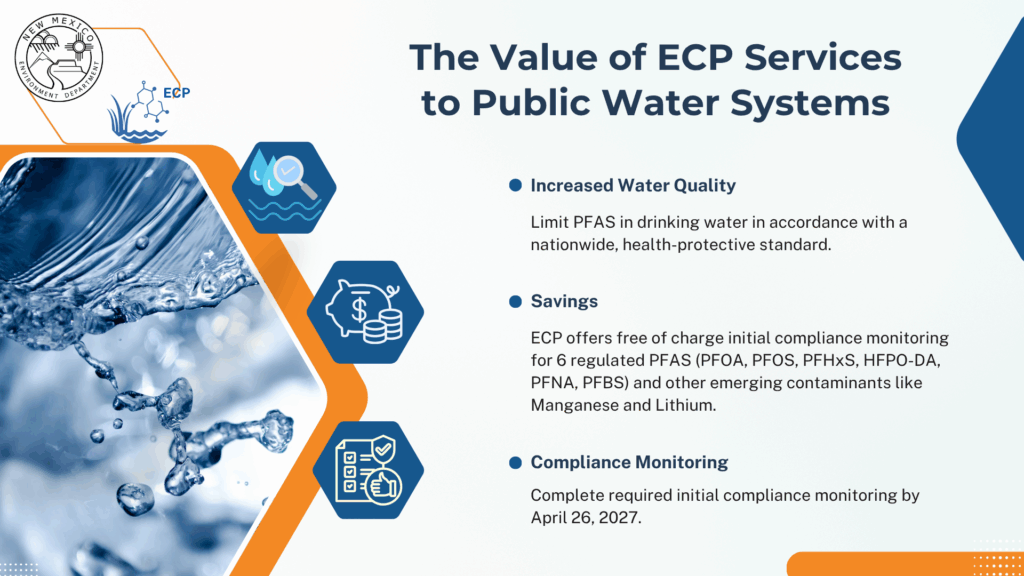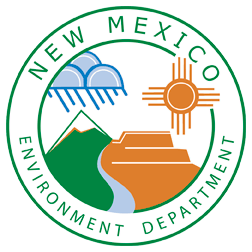Introducing the Emerging Contaminants Program (ECP)
National Primary Drinking Water Regulation for six PFAS
In April 2024, the U.S. Environmental Protection Agency (EPA) announced National Primary Drinking Water Regulation (NPDWR) for six per-and polyfluoroalkyl substances (PFAS). The regulation established Maximum Contaminant Levels (MCLs) for PFOA, PFOS, PFNA, PFHxS, and HFPO-DA (also known as GenX chemicals) as individual contaminants, and will regulate PFNA, PFHxS, HFPO-DA, and PFBS as a mixture through a Hazard Index. MCLs are enforceable maximum regulatory levels of a compound allowed in drinking water. The rule is expected to reduce PFAS exposure in drinking water for millions of people, preventing thousands of deaths and significantly lowering the incidence of PFAS-related illnesses.
The rule requires:
- Public water systems (PWSs) to monitor for these six PFAS. Systems have three years to complete initial monitoring (by 2027), followed by ongoing compliance monitoring. Water systems must also provide the public with information on the levels of these PFAS in their drinking water beginning in 2027. Link to Monitoring Fact Sheet.
- Public water systems have five years (by 2029) to implement solutions that reduce these PFAS if monitoring shows that drinking water levels exceed these MCLs.
- Beginning in five years (2029), public water systems that have PFAS in drinking water that violate one or more of these MCLs must take action to reduce levels of these PFAS in their drinking water and must provide notification to the public of the violation.
Emerging Contaminants in Small or Disadvantaged Communities Program
Funded by U.S. EPA, NMED established the Emerging Contaminants in Small or Disadvantaged Communities program (ECP). ECP offers:
- Free sampling and testing of regulated PFAS and other emerging contaminants in drinking water and source water in small or disadvantaged communities.
- Educational materials and communication tools to help them inform and engage the communities they serve.

Attention Public Water System Representatives in New Mexico
If you serve as a board member, manager, or operator of a Public Water System (PWS) in New Mexico, please complete this form to ensure ECP has up-to-date contact information for upcoming sampling activities.
ECP Eligibility Criteria
- Public water systems serving 10,000 connections or less; and/or
- Disadvantaged water systems in New Mexico are communities where the median household income (MHI) falls below the state MHI, based on the most recent 5-year average from census data.
If you have questions about Emerging Contaminants in Small or Disadvantaged Communities program, please send your questions to emergingcontam.sdc@state.nm.us.
Quality Assurance and Sampling Protocols
Upcoming ECP Events
- 2025 Water Data Initiative Workshop, October 14-15
- 2025 NM Professional Water Operator Seminar, Rocky Mountain Water Environment Association, October 16
- 2025 NM Water Conference, Water Resources Research Institute, Oct 21-23
- 2025 NM Rural Water Association Conference, Oct 28-30
- 2025 NM Infrastructure Finance Conference, Nov 3-7


